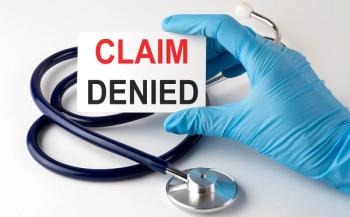
Tackling Physician Burnout During a Pandemic
By optimizing technology as part of a wider strategy, practices can help physicians better manage their day-to-day.
Prior to COVID-19, physician burnout was starting to decline. A
At the start of 2020, doctors were frustrated by too much paperwork, lack of time for patient-centric care and poor work-life balance. Fast forward 15 months. While all the same irritants still exist, there is the added stress of operating during a long-term and worldwide public health crisis.
Physician burnout continues to be a huge concern. When doctors are rushed to see patients or become bogged down in inefficiencies, they can get tired and frustrated, which can ultimately lead to burnout. Practices should look for ways to reduce this burden and free physician time to focus on patient care.
What does physician burnout look like now?
Physician burnout happens when a doctor experiences high
Although there has been a national spotlight on pandemic-induced burnout in the
Technology could hold the answer
While there are many ways to approach the issue of physician burnout, one potential strategy is leveraging the right technology. Some say the increased use of technology in healthcare is
However, when clinical and practice management systems are designed and used effectively and in tandem, they can actually enable more efficiencies and smoother workflows, helping physicians meaningfully engage with patients while improving productivity. Here are a few ways that technology can make a positive difference.
Creating a balanced schedule
The optimal appointment schedule balances the need to see patients efficiently with the importance of spreading out visits to maintain safe distances while giving physicians necessary time off to recharge and recover. Technology that offers drag-and-drop scheduling allows staff to easily and efficiently create, adjust and optimize the schedule.
When physicians have access to the technology, they can tailor their schedules to their own work preferences, building in predictable times away from the office to prevent overwork and burnout.
Using anytime, anywhere connected care solutions
When COVID-19 first emerged, providers quickly shifted to remote care, often using common virtual communication platforms to host patient-provider interactions. However, privacy and security issues, clunky interfaces and the need to toggle between an EHR and a virtual communications platform made the logistics of these visits burdensome.
Despite the difficulties, physicians began to see that telehealth interactions could foster
The use of connected care has highlighted its potential for reducing physician burnout. Telehealth offers providers the opportunity and convenience to provide care from anywhere. A change of scenery or the ability to work the second part of their day from home can help reduce feelings of burnout. With the flexibility of an EHR-integrated telehealth solution that offers both clinical and PM functions, providers can also complete charting and administrative tasks during a visit without sacrificing quality of care. This means fewer hours spent documenting, saving time not only during the day but also after hours, minimizing burnout from documentation.
To take advantage of the benefits telemedicine offers while addressing its inherent challenges, providers need technology that is specifically designed for healthcare and embedded in the EHR. This ensures HIPAA-compliant interactions while enabling one-click functionality. Clinicians are able to simultaneously participate in the visit and document telehealth within clinical care workflows. Data collected during the appointment can be shared efficiently throughout a practice, including between providers and across departments.
Reduce staffing shortages
Running a practice while shorthanded can become yet another exacerbating factor for physician burnout. An
To ensure practices are fully staffed, measures should be implemented so that neither staff nor providers experience additional burnout from being shorthanded. For example, coordinating vacation schedules in advance that require employees to give a few weeks’ notice can help staff avoid being caught off guard by absences or staffing gaps. Practices should also make efforts to cross-train staff so that everyone has the ability to fill in role gaps when necessary.
A key element in a multifaceted strategy
Physician burnout is likely to remain a concerning issue. However, by optimizing technology as part of a wider strategy, practices can help physicians better manage their day-to-day experiences and lessen the likelihood of frustration and fatigue.
Jennifer Gibson is vice president of client success for Nextech, a developer of practice management software for medical practices.
Newsletter
Stay informed and empowered with Medical Economics enewsletter, delivering expert insights, financial strategies, practice management tips and technology trends — tailored for today’s physicians.








